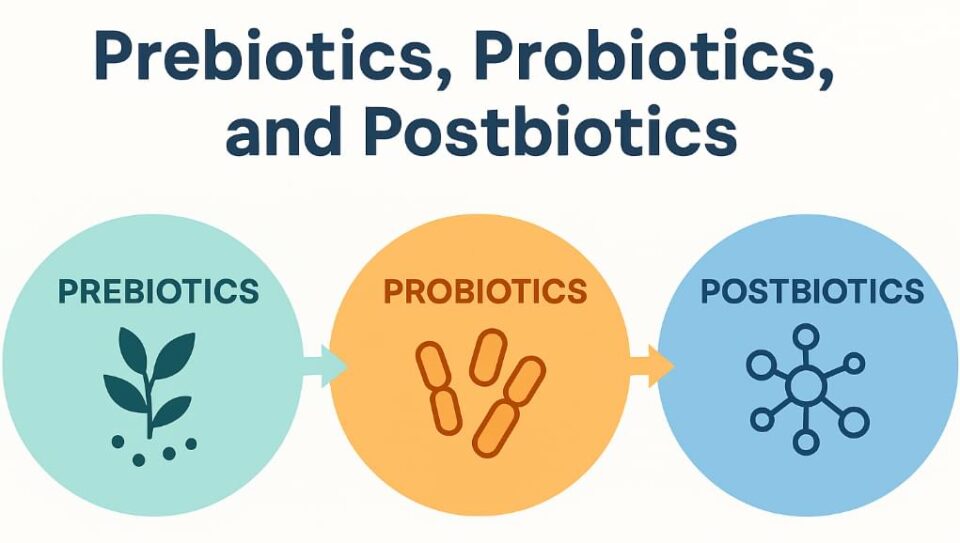Understanding the differences, benefits, and opportunities within Probiotics, Prebiotics and Postbiotics can help brands develop best-in-class formulations.
The dietary supplement market has witnessed significant growth in recent years, and the biotics segment offers an exciting opportunity for innovation. As consumer interest in gut health, immunity, and overall well-being increases, three key categories are taking center stage: probiotics, prebiotics, and postbiotics.
Understanding the differences, benefits, and opportunities within these areas is essential for supplement brands interested in this expanding market.

Probiotics: Live Microorganisms that Benefit Health
Probiotics are perhaps the most well-known category within the biotic space. These live microorganisms are naturally found in the human gut and play a critical role in maintaining a balanced microbiome.
When taken in adequate amounts, probiotics have been shown to offer various health benefits, particularly for digestion and immunity. New research on unique strains has shown benefits for cardiovascular health, cognitive function, skin health, women’s health, weight management, and more.
Developing high-quality formulas that incorporate research-backed probiotic strains can be a lucrative venture for supplement brands targeting specific health conditions.
Prebiotics: Fuel for Beneficial Microorganisms
Meanwhile, prebiotics are a diverse category of ingredients — including carbohydrates, resistant starches, pectins, and other compounds — that are utilized by the microbiota to produce a health or performance benefit.
These ingredients can improve the microbiome in several ways, including by acting as substrates and food for probiotics, helping to support microbial activity and modulate composition. The microbial metabolism of prebiotics can also contribute to the production of several metabolites, including short-chain fatty acids (SCFAs), which serve as energy reservoirs to promote the growth of additional microbes and increase microbial diversity. Prebiotics can also help optimize the microbiome and balance bacteria levels.
Formulating supplements that combine prebiotics with probiotics (synbiotics) is a promising opportunity, as this synergistic approach can offer more comprehensive gut support.
Postbiotics: Byproducts with Therapeutic Potential
Postbiotics are inactivated microorganisms or their components that provide health benefits to a host. Unlike probiotics, which are live microorganisms, postbiotics consist of substances such as SCFAs, enzymes, and cell wall fragments.
These byproducts can provide several health benefits, even without the presence of live bacteria. For example, SCFAs have been shown to help reduce gut inflammation while some postbiotics may support the integrity of the gut lining, enhancing gut barrier function. Postbiotics can also help regulate immune responses.
Postbiotics give formulators great flexibility in product development, as they are inactivated bioactive compounds, eliminating concerns about stability and viability that come with live microorganisms.
Understanding the distinctions and benefits of probiotics, prebiotics, and postbiotics can help brands identify opportunities to create innovative products that cater to the evolving needs of health-conscious consumers. By staying ahead of these trends and offering products that combine these biotic categories, brands can position themselves as leaders in the microbiome supplement market.
